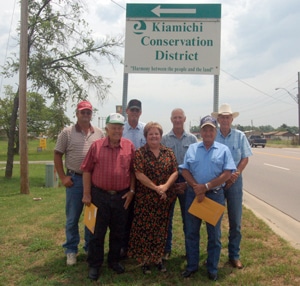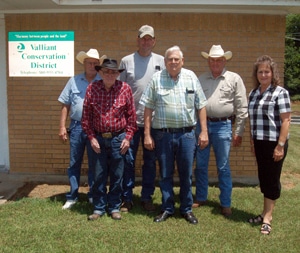Conservation Bond, Contributions Agreement, Budget Outlook

OCC staff members attend board meetings at every conservation district in the state during July and August to discuss the Conservation Bond, the NRCS Contributions Agreement and the Budget Outlook for fiscal year 2010 and beyond.

The Oklahoma Legislature passed and Gov. Brad Henry signed a legislation authorizing a bond to fund several conservation activities. The $25 million bond will provide state cost match for federal money for watershed rehabilitation, fund watershed operation and maintenance, provide cost match for Federal Emergency Management Administration projects in Caddo County, help develop a flood protection plan for the city of Kingfisher, and fund locally-led Conservation Cost-Share Program. Because the bond is administered by the Oklahoma Capitol Improvement Authority, each conservation district that wishes to participate must sign an agreement agreeing to the terms of the bond. The bond will be repaid over a 15-year period.
For a number of year a Contributions Agreement between OCC and the USDA Natural Resources Conservation Service has allowed NRCS to reimburse OCC for assistance conservation districts provide in carrying out Farm Bill programs. OCC, in turn, used the funds to replace funds to district allocations because cuts in the state budget. As the agreement is being renewed this year, each district wishing to participate is being asked to sign a new agreement.

OCC staff are also discussing with district boards how these one-time funds are being used fill in the gap created by the seven percent cut in OCC and districts’ state allocation for fiscal year 2010. While no employee furloughs or reductions in force are necessary at this time, additional funding will be needed to continue to provide an increasing number of conservation programs with adequate staff and equipment.
